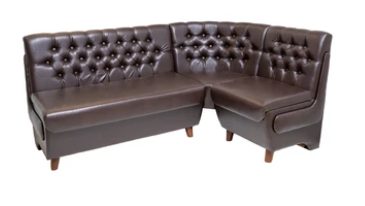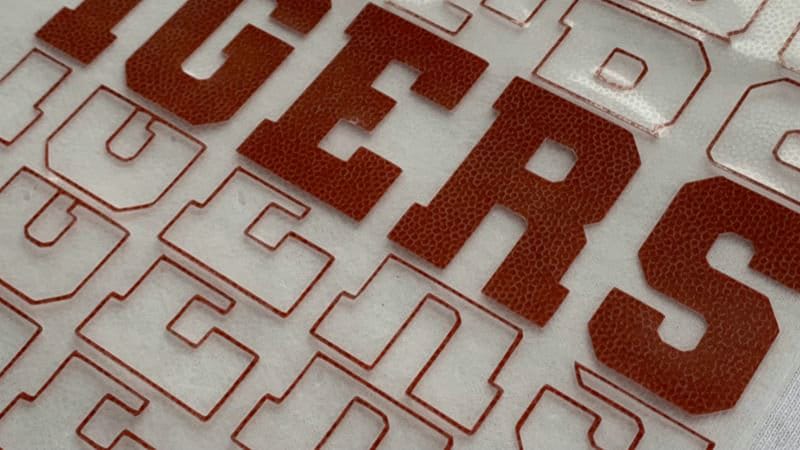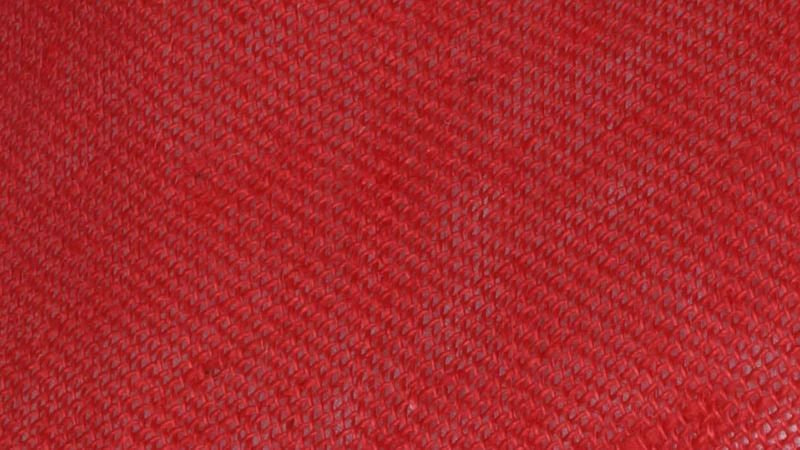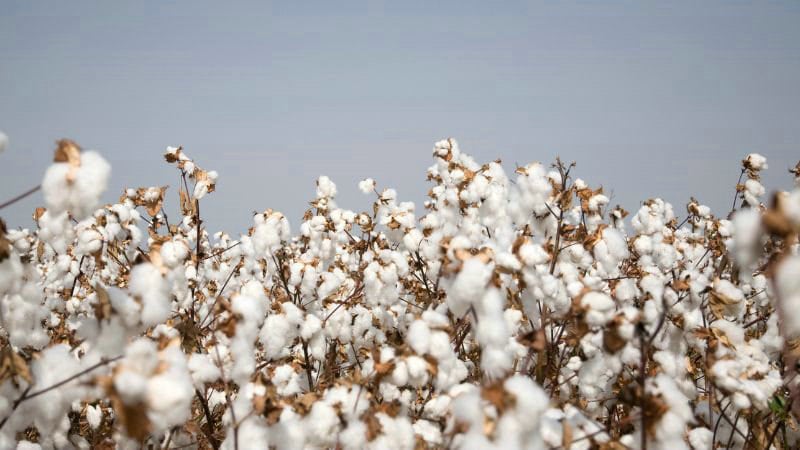Fabric patterns add personality, style, and functionality to everything from fashion apparel to home décor.
From classic stripes and plaids to intricate motifs like paisley and mandala, each pattern brings its own unique flair and purpose.
Join us as we explore the timeless and trendy patterns that define the textile industry and discover how Sinocomfort can support your journey in creating beautiful, comfortable, and stylish spaces and garments.
What are Fabric Patterns?
Patterns are more than just designs; they are the stories and innovations woven into the threads that have adorned materials for centuries.
You might be surprised to learn that some of the fabric patterns you see have been around for a long time.
Geometric patterns, for example, have origins that date back to ancient times; these include shapes like squares, triangles, and circles, forming designs that are regularly repeated.
Similarly, floral patterns have a rich history, often carrying symbolic meanings, and have been used for decorative purposes since the days of early civilization.
Different Types of Fabric Patterns
Here are 25 common types of patterns for you to take a reference. Each pattern type can give you different feels.
1. Stripe Pattern
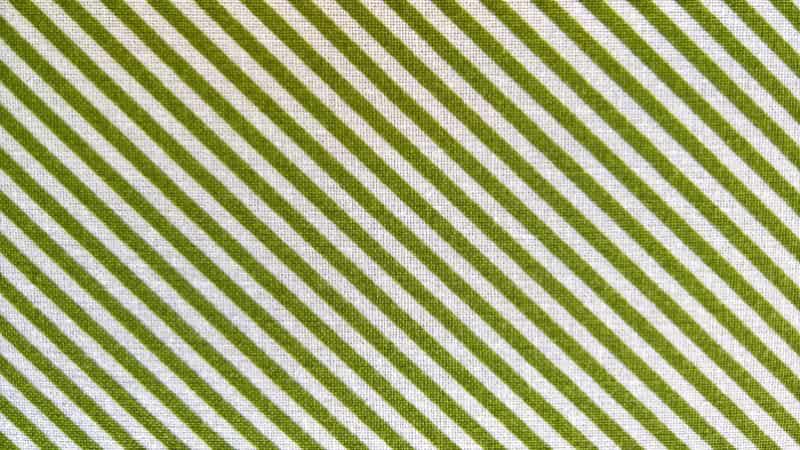
Stripes are one of the most versatile and widely recognized fabric patterns, consisting of parallel lines that vary in width, color, and orientation.
- Vertical Stripes: Create an elongating effect, making the wearer appear taller. Commonly used in shirts, dresses, and suits.
- Horizontal Stripes: Add width and are often seen in casual wear like t-shirts and shorts.
- Diagonal Stripes: Offer a dynamic look, adding movement and making a bold fashion statement.
2. Plaid
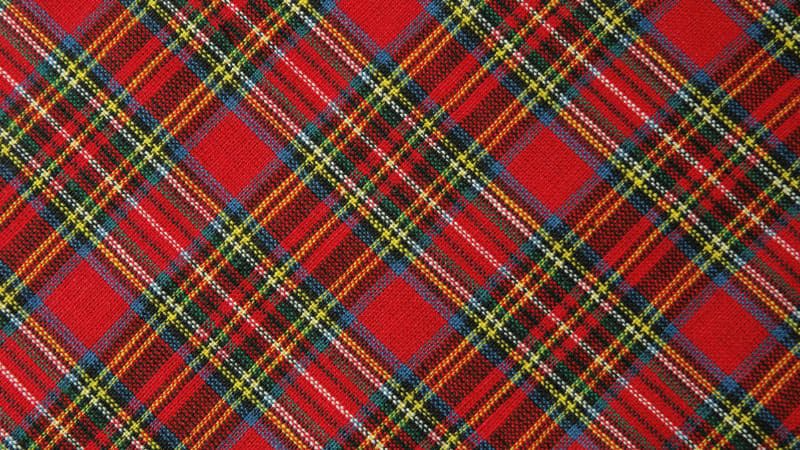
Plaid patterns feature crisscrossed horizontal and vertical bands in two or more colors. Originating from Scotland, plaid varies in complexity from simple checks to intricate designs.
- Gingham: A simple plaid with large white and colored checks, often seen in shirts and summer dresses.
- Tartan: A traditional Scottish plaid with multiple colors and narrow stripes, typically used in kilts and scarves.
- Windowpane: A subtle plaid with wide lines that resemble a windowpane, commonly used in suits and blazers.
- Buffalo Check: Large squares in two contrasting colors, commonly used in flannel shirts and blankets.
3. Checked
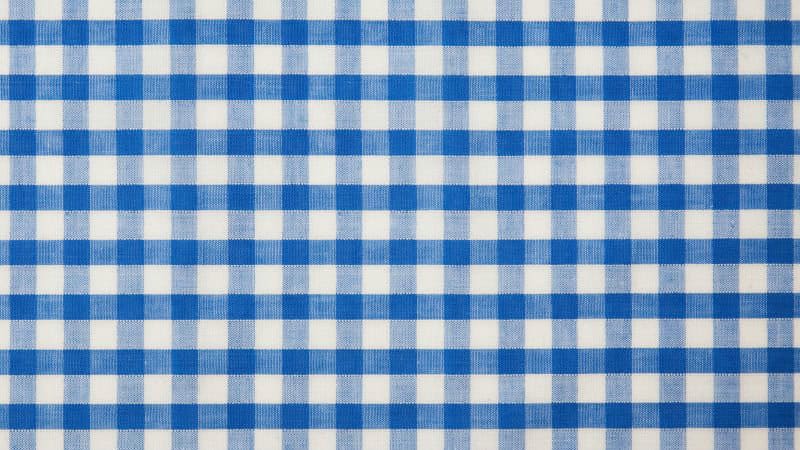
Checked patterns consist of squares or rectangles intersecting to form a grid-like appearance.
- Tartan Checked: Similar to plaid but often narrower, traditionally associated with Scottish kilts.
- Windowpane Check: Thin lines form large squares, which is ideal for suits and formal attire.
4. Floral
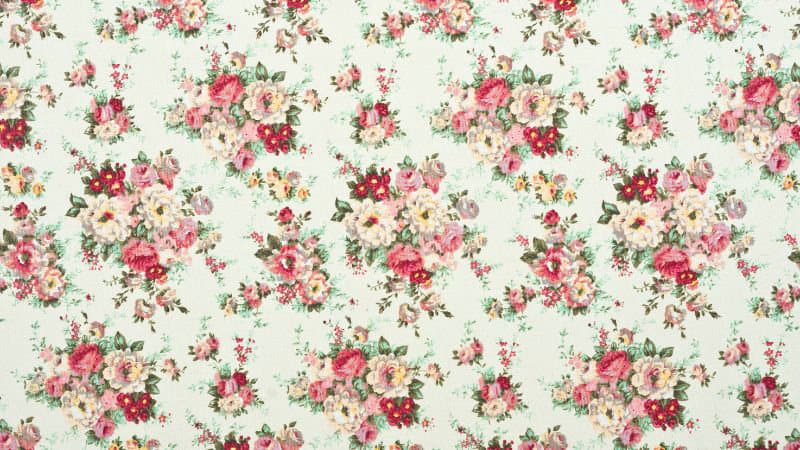
Floral patterns mimic flowers and botanical elements, bringing a natural and vibrant feel to fabrics.
- Small Florals: Delicate and intricate, perfect for blouses, dresses, and lightweight scarves.
- Large Florals: Bold and eye-catching, often used in statement pieces like maxi dresses and upholstery.
- Abstract Florals: Stylized or unconventional representations of flowers, adding an artistic touch to garments and home textiles.
5. Polka Dots Pattern
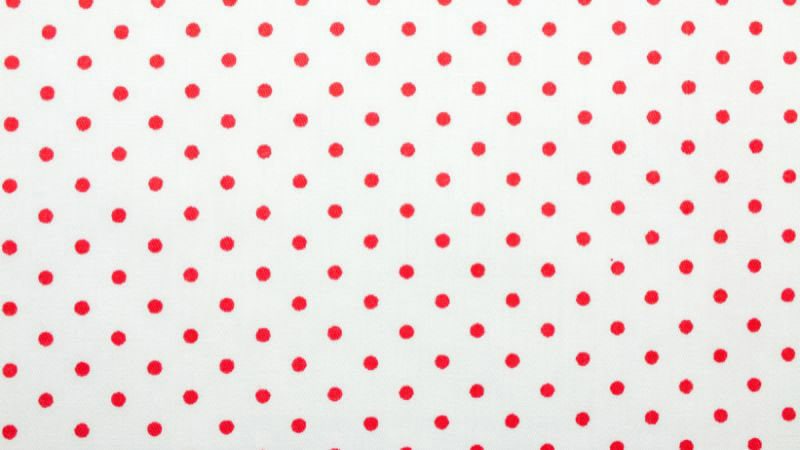
Polka Dots consist of an array of equally spaced circles, creating a playful and whimsical appearance.
- Small Dots: Subtle and sophisticated, ideal for blouses, skirts, and accessories.
- Large Dots: Fun and attention-grabbing, perfect for summer dresses, swimwear, and bold interiors.
- Multi-Colored Dots: Adds vibrancy and can be used to create dynamic patterns on various fabrics.
6. Geometric
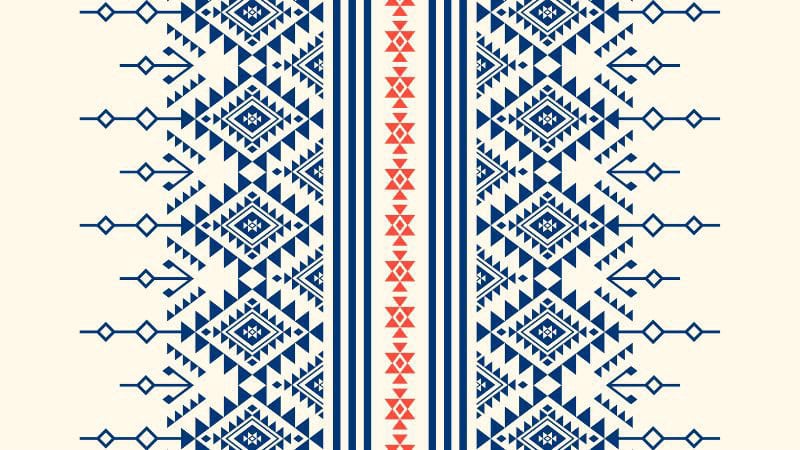
Geometric patterns involve shapes such as squares, triangles, circles, and hexagons arranged in a structured manner.
- Chevron: Repeated inverted V shapes create a zigzag effect, which is often used in modern apparel and home décor.
- Houndstooth: Broken check pattern known for its jagged edges, commonly seen in outerwear and accessories.
- Ikats: Patterns created using dyed threads before weaving, resulting in blurred or feathered edges, popular in scarves and throws.
- Birdseye: Small, repeating geometric shapes resembling the eye of a bird, often used in shirts and blouses.
- Quatrefoil: Symmetrical shapes resembling a four-leaf clover used in decorative patterns.
7. Camouflage
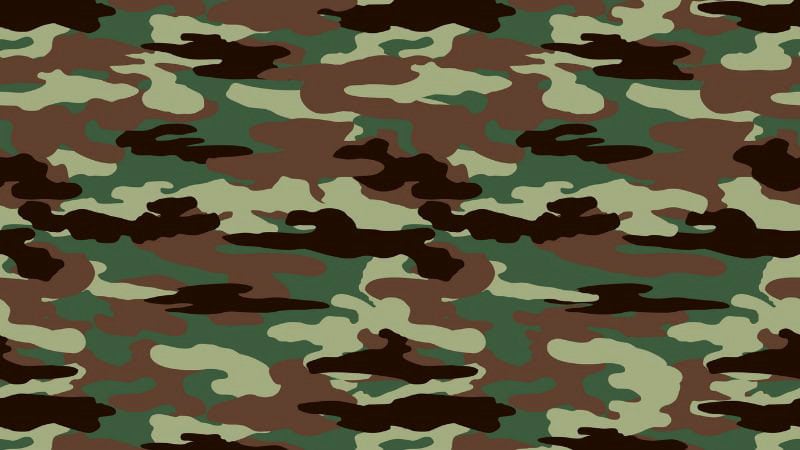
Camouflage, or Camo, is inspired by military uniforms, and nature is designed to blend into the environment.
- Traditional Camo: Features earthy tones like greens, browns, and tans in irregular patterns, used in jackets, pants, and accessories.
- Urban Camo: Incorporates grays and blues for a modern twist, suitable for streetwear and casual outfits.
- Abstract Camo: Creative interpretations with unconventional colors and shapes, adding uniqueness to fashion pieces.
8. Paisley
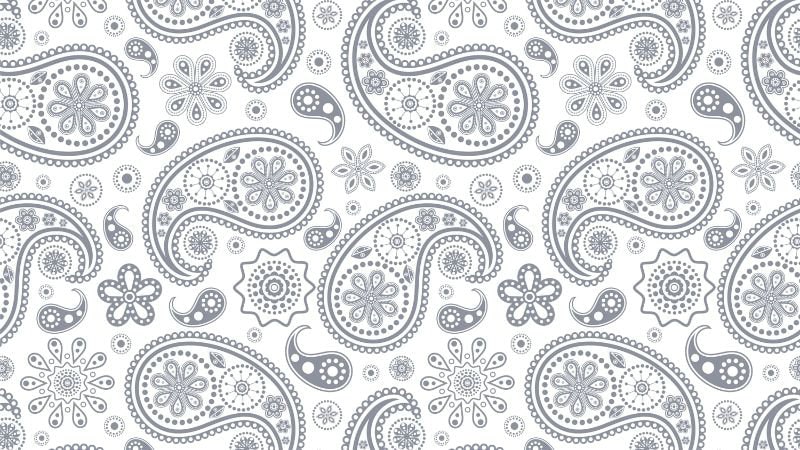
Paisley is a detailed, teardrop-shaped motif with intricate patterns, originating from Persian and Indian designs.
- Classic Paisley: Features traditional motifs with elaborate detailing, often used in ties, scarves, and dresses.
- Modern Paisley: Simplified and stylized versions for contemporary fashion, suitable for shirts, skirts, and accessories.
- Floral Paisley: Combines floral elements with paisley shapes, adding a feminine touch to various garments.
9. Herringbone
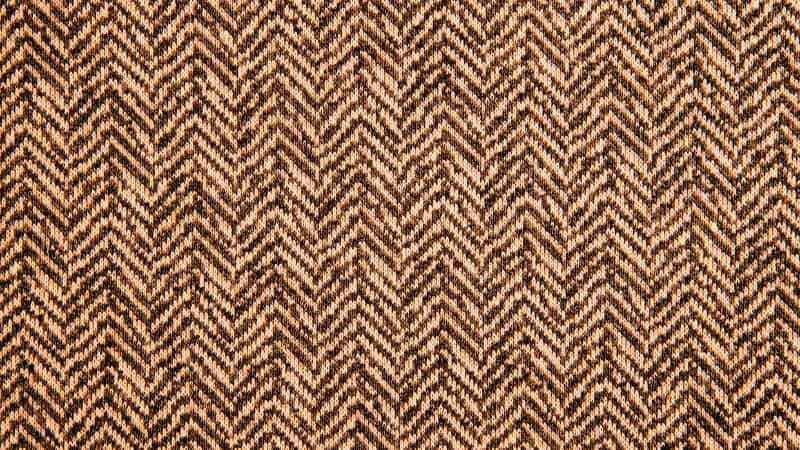
Herringbone is a V-shaped weaving pattern resembling the bones of a herringfish.
- Classic Herringbone: Subtle and sophisticated, commonly used in suits, coats, and trousers.
- Bold Herringbone: Enhanced contrast between colors, making the pattern more prominent in outerwear and accessories.
- Extended Herringbone: Larger repeat pattern for a more noticeable effect, suitable for statement pieces.
10. Damask

Damask fabric is a reversible pattern featuring intricate, often floral, designs woven into the fabric.
- Traditional Damask: Luxurious and elegant, used in home textiles like tablecloths, curtains, and upholstery.
- Contemporary Damask: Modern interpretations with simplified or abstract motifs, applicable to fashion and accessories.
- Printed Damask: Patterns printed onto plain fabrics, offering the look of woven damask without the high cost.
11. Toile
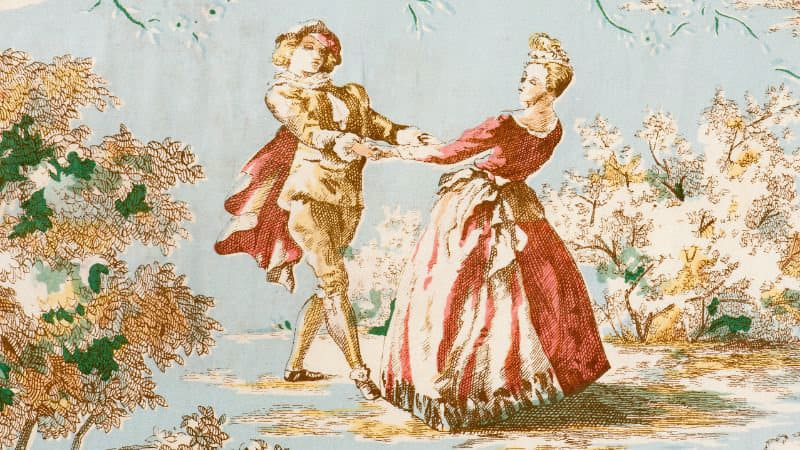
Toile (short for Toile de Jouy) features intricate, monochromatic scenes, often pastoral or historical.
- Traditional Toile: Depicts detailed landscapes, people, and architectural elements, commonly used in wallpaper and upholstery.
- Modern Toile: Simplified and stylized scenes for contemporary interiors and fashion.
- Colorful Toile: Incorporates various colors instead of traditional blue and white, adding vibrancy to textiles.
12. Argyle
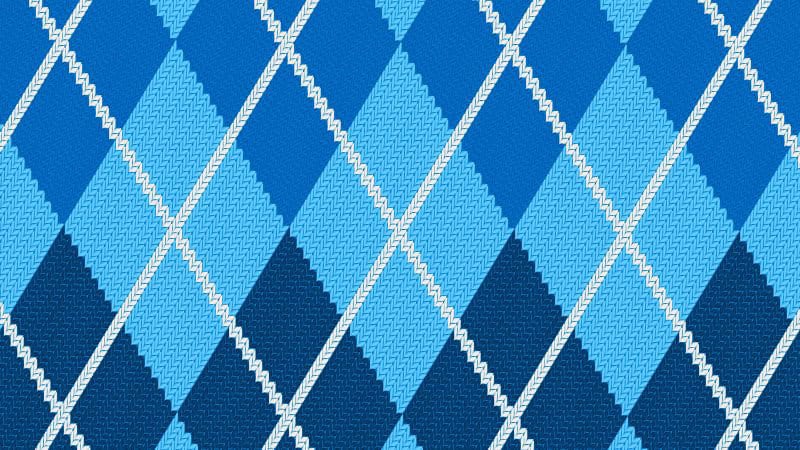
Argyle features overlapping diamond shapes with crisscrossing lines, traditionally associated with knitwear like socks and sweaters.
- Traditional Argyle: Classic color combinations, often seen in preppy fashion and athletic wear.
- Modern Argyle: Updated color palettes and simplified diamond shapes for a contemporary look.
- Oversized Argyle: Larger diamond patterns making a bold statement in fashion and home décor items.
13. Abstract
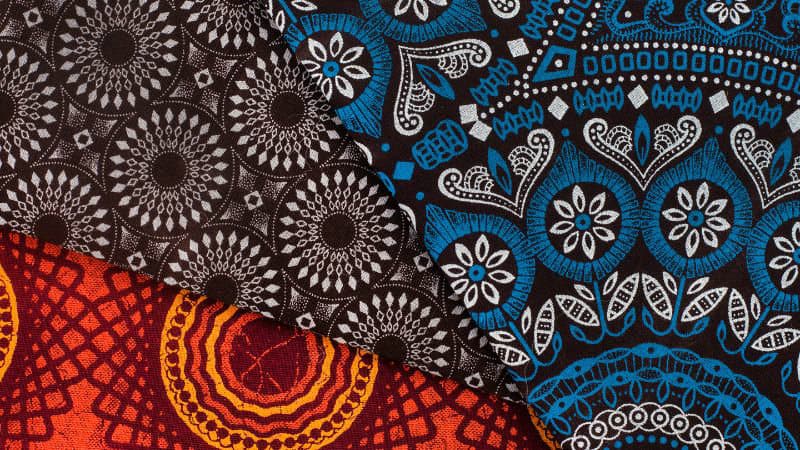
Abstract patterns are non-representational and can include a variety of shapes, lines, and colors without depicting specific objects.
- Freeform Abstract: Random and expressive designs, ideal for artistic garments and unique home textiles.
- Geometric Abstract: Combines geometric shapes in unconventional arrangements, suitable for modern fashion and interiors.
- Color-Blocked Abstract: Uses distinct blocks of color with abstract shapes, creating a striking visual impact.
14. Spots
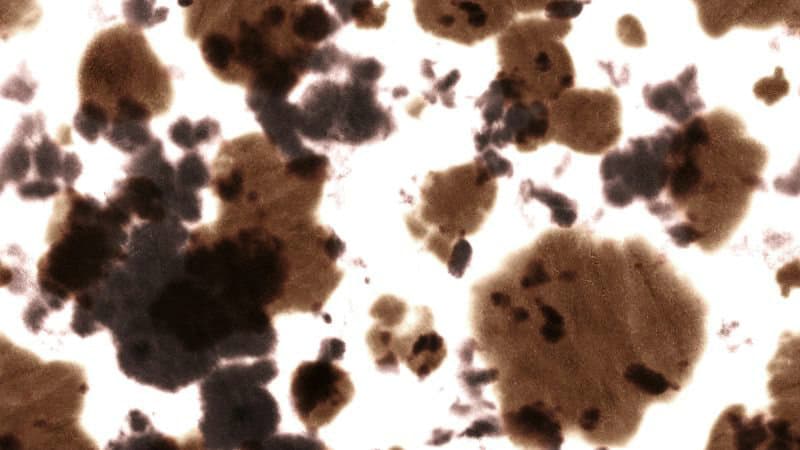
Spots are similar to polka dots but can vary more in size, placement, and color, offering a playful and versatile look.
- Scattered Spots: Irregular placement of spots creates a whimsical and casual feel, suitable for dresses and casual wear.
- Organized Spots: Evenly spaced spots provide a more structured and sophisticated appearance, ideal for blouses and skirts.
- Mixed Spots: Combining different sizes and colors of spots adds complexity and visual interest to the fabric.
15. Birdseye
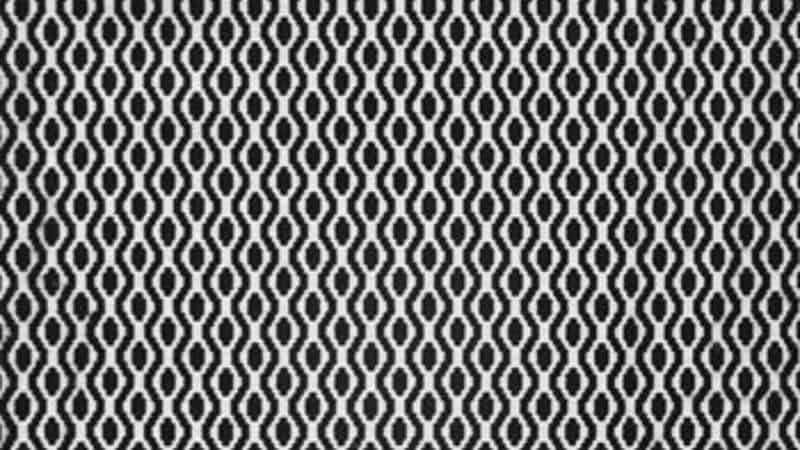
Birdseye is a small, repeating geometric pattern that resembles the eye of a bird.
- Classic Birdseye: Simple, evenly spaced circles creating a subtle texture, often used in shirts and blouses.
- Textured Birdseye: Variations in thread thickness or color add depth and complexity to the pattern.
- Modern Birdseye: Incorporates unconventional colors or slight distortions for a contemporary twist.
16. Animal Prints
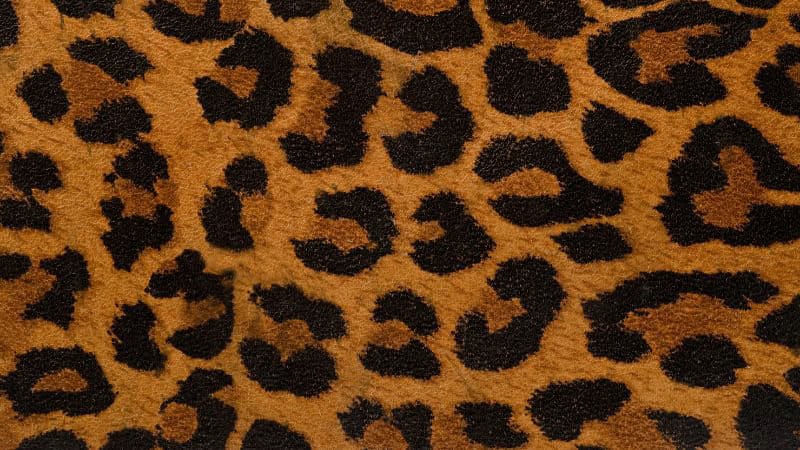
Animal Prints mimic the patterns found on animal skins, adding a wild and exotic touch to fabrics.
- Leopard Print: Spots of varying sizes, typically in gold and black, popular in fashion accessories and outerwear.
- Zebra Print: Stripes in black and white or other color combinations, used in dresses, shoes, and bags.
- Snake Print: Scaly patterns with subtle color variations, ideal for scarves, belts, and footwear.
17. Landscape
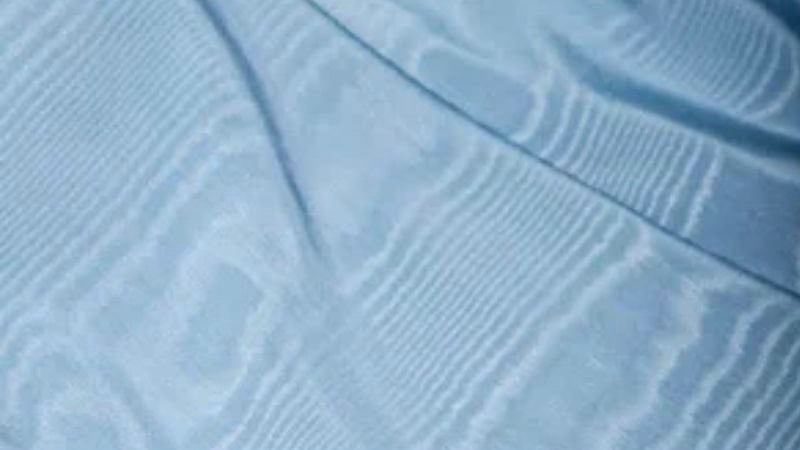
Landscape patterns feature scenic views such as mountains, forests, or oceans, bringing a natural element to fabrics.
- Floral Landscapes: Incorporates flowers and plants within scenic backgrounds, suitable for dresses and home textiles.
- Urban Landscapes: Features cityscapes and architectural elements, ideal for modern apparel and accessories.
- Fantasy Landscapes: Imaginative and surreal scenes adding a whimsical touch to garments and décor.
18. Moiré
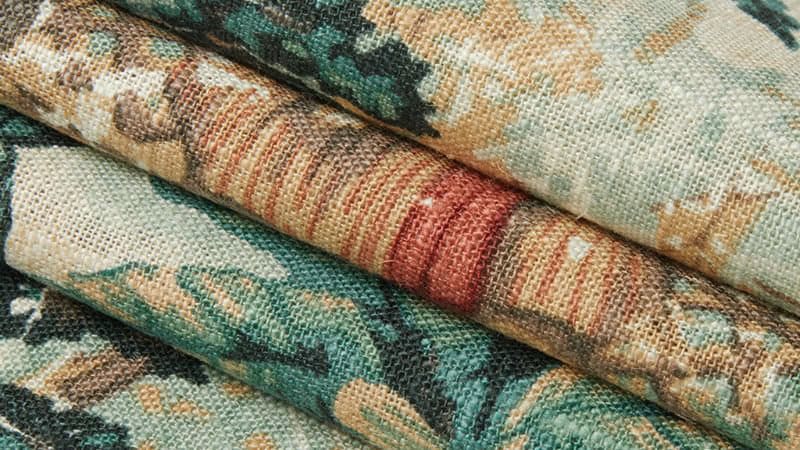
Moiré is a wavy or rippled pattern created through specific weaving or printing techniques, giving the fabric a watery appearance.
- Classic Moiré: Subtle waves or ripples in monochromatic tones, often used in shawls and scarves.
- Colored Moiré: Incorporates multiple colors to enhance the visual depth and complexity.
- Textured Moiré: Adds raised or embossed elements for a tactile and visually interesting fabric.
19. Quatrefoil
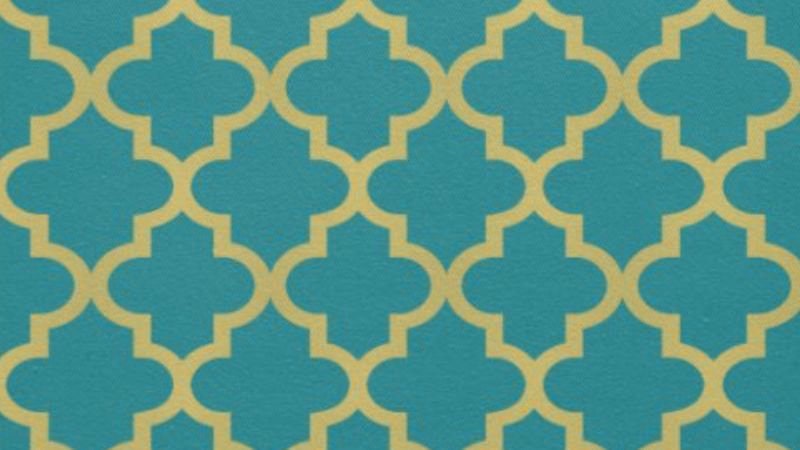
Quatrefoil features a symmetrical shape resembling a four-leafed clover, often used in decorative patterns.
- Classic Quatrefoil: Simple and elegant, suitable for blouses, dresses, and home décor items.
- Modern Quatrefoil: Stylized versions with clean lines and contemporary color schemes.
- Layered Quatrefoil: Multiple overlapping quatrefoil shapes create a more intricate and dynamic pattern.
20. Logomania

Logomania involves large, prominent logos or brand names as the central design element.
- Classic Logomania: Features recognizable brand logos, popular in streetwear and casual fashion.
- Minimalist Logomania: Subtle placement of logos with a clean design aesthetic.
- Mixed Logomania: Combines multiple logos or integrates logos with other patterns for a unique look.
21. Greek Key (Meander)
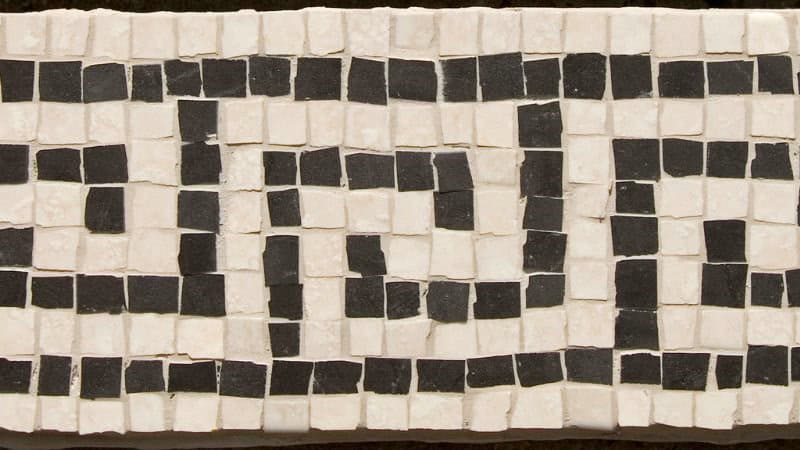
Greek Key, also known as Meander, features a continuous line that folds back on itself in a repeated geometric pattern.
- Classic Greek Key: Simple and elegant, often used in borders for dresses and home décor.
- Modern Greek Key: Incorporates variations in line thickness and color for a contemporary twist.
- Integrated Greek Key: Combines with other patterns or motifs, adding complexity to the design.
22. Organic Prints

Organic Prints are inspired by natural forms and shapes, emphasizing fluidity and irregularity.
- Leaf Prints: Mimic the shapes and textures of various leaves, suitable for dresses and accessories.
- Watercolor Organic: Fluid, watercolor-like designs that blend colors seamlessly, ideal for scarves and blouses.
- Abstract Organic: Incorporates freeform shapes and lines, adding an artistic and modern touch to fabrics.
23. Patchwork
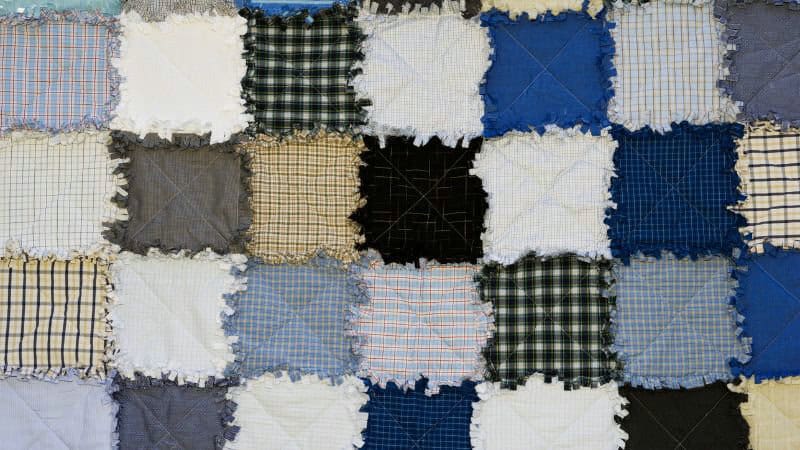
Patchwork involves sewing together different fabric pieces to create a varied and eclectic pattern.
- Traditional Patchwork: Combines complementary or contrasting fabrics in a harmonious design, often seen in quilts.
- Modern Patchwork: Uses unconventional fabrics and asymmetrical designs for a contemporary look.
- Mixed Materials Patchwork: Incorporates different textures and materials, such as denim with silk, for a unique appearance.
24. Damier
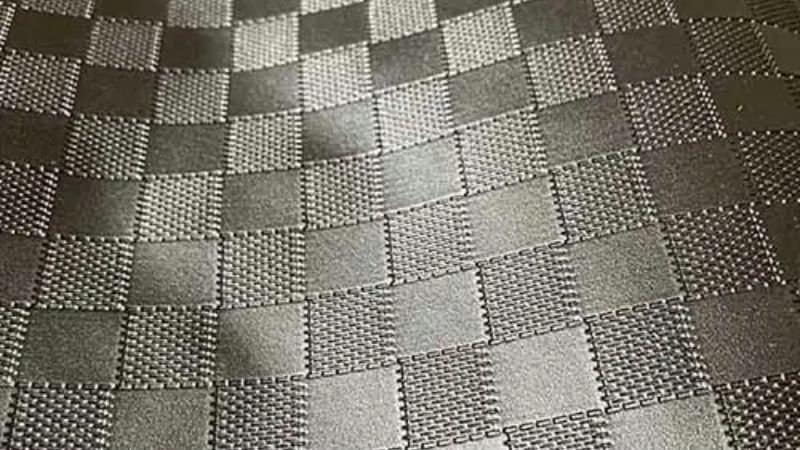
Damier is a checkerboard pattern, similar to damask but typically in two solid colors.
- Classic Damier: Alternating squares in contrasting colors, popularized by brands like Louis Vuitton.
- Modern Damier: Incorporates additional colors or variations in square sizes for a fresh take.
- Textured Damier: Adds dimension through raised patterns or mixed materials within the squares.
25. Mandala
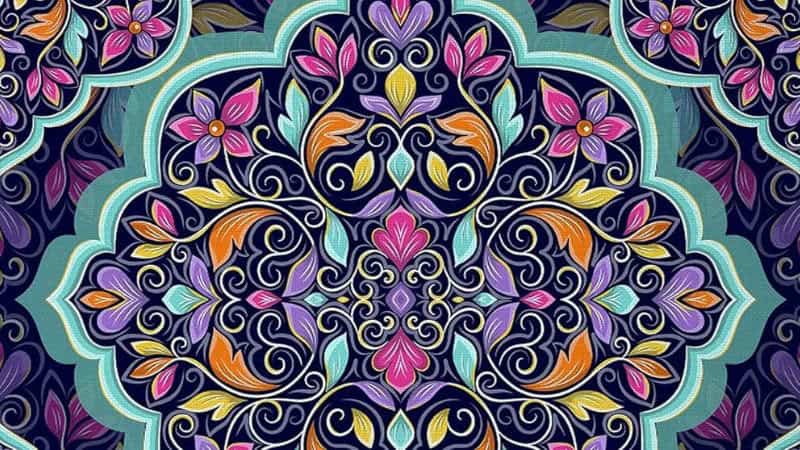
Mandala patterns are intricate, circular designs with symmetrical motifs, often inspired by spiritual and cultural symbols.
- Traditional Mandala: Detailed and symmetrical, used in bohemian fashion and home décor.
- Modern Mandala: Simplified lines and contemporary color schemes for a fresh look.
- Abstract Mandala: Incorporates non-traditional shapes and colors, adding an artistic flair to fabrics.
Pattern Fabric From Sinocomfort
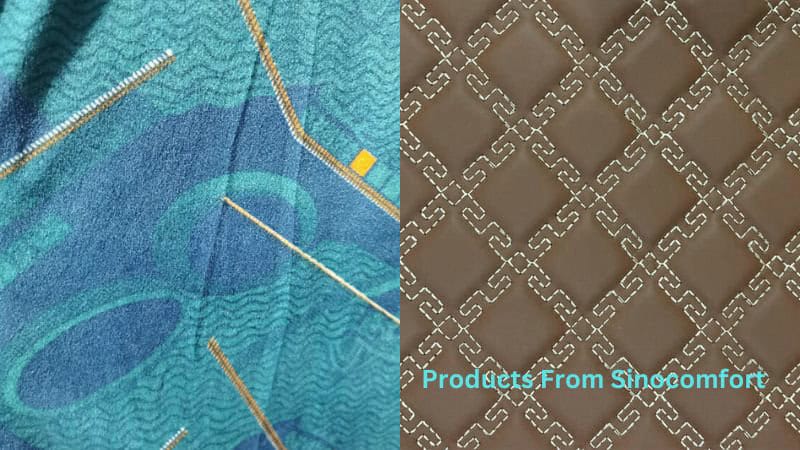
Blue Pattern Upholstery Fabric
- Generous Width: With a 150cm width, this fabric accommodates a variety of upholstery projects, reducing seams and ensuring a seamless finish.
- Robust Weight: At 400GSM (grams per square meter), the fabric offers exceptional thickness and resilience, providing long-lasting wear and resistance to everyday wear and tear.
- Premium Material: Crafted from top-grade materials, this upholstery fabric delivers a luxurious feel while maintaining practicality and ease of maintenance.
- Vibrant Blue Color: The rich blue shade adds a touch of elegance and sophistication to any vehicle’s interior, enhancing its overall aesthetic appeal.
Artificial Leather With Pattern
- Versatile Width: Available in 150cm to 155cm widths, this PVC artificial leather caters to diverse project needs, providing ample material for both small and large-scale applications.
- Elegant Embroidery Patterns: Features intricate embroidery designs that enhance the visual appeal, making it an excellent choice for decorative and functional uses.
- High-Quality PVC Material: Crafted from durable PVC, this artificial leather offers the look and feel of genuine leather while being more resistant to wear, moisture, and stains.
- Fashionable Design: The stylish embroidery patterns and sleek finish make this fabric a trendy choice for contemporary designs in fashion and interior décor.
- Eco-Friendly Alternative: As a synthetic material, PVC artificial leather provides an animal-friendly alternative without compromising on quality or aesthetics.
Frequently Asked Questions
What are the 4 types of pattern?
The four fundamental woven fabric patterns are: plain weave, twill weave, satin weave, and jacquard weave.
What are fabric templates called?
Fabric templates are called patterns or garment patterns. These are 2D blueprints used to cut fabric pieces for sewing, created through pattern drafting.
What are the different types of textile designs?
Textile designs broadly fall into two categories:
- Structural Designs:
- Weave-based: Plain, twill, satin, jacquard weaves
- Knit-based: jersey or rib knits
- Surface Designs:
- Prints: Floral, geometric, abstract, or thematic patterns applied via dyeing.
- Embellishments: Embroidery, beading, or appliqué.
- Pattern Types: Plaid, tartan, gingham, checks, ikat, trellis, etc.
Is the ogee pattern the same as the quatrefoil pattern?
No, an ogee pattern is not the same as a quatrefoil pattern. While both are decorative elements commonly used in design and architecture, they each have distinct characteristics and origins.
What are the key differences between various fabric design patterns?
Each pattern has a signature look that sets it apart. Geometric patterns offer a more modern and structured appearance, while floral and paisley patterns can give a softer and more organic feel. Stripes can be casual or formal depending on their width and spacing, while plaid patterns evoke a traditional or rustic style.
How are fabric patterns typically categorized?
Patterns are often categorized by their design motifs, such as geometric, floral, abstract, and conversational (which depict recognizable objects or scenes). They’re also categorized by technique, like printed, woven, or embroidered, which affect texture and design clarity.



